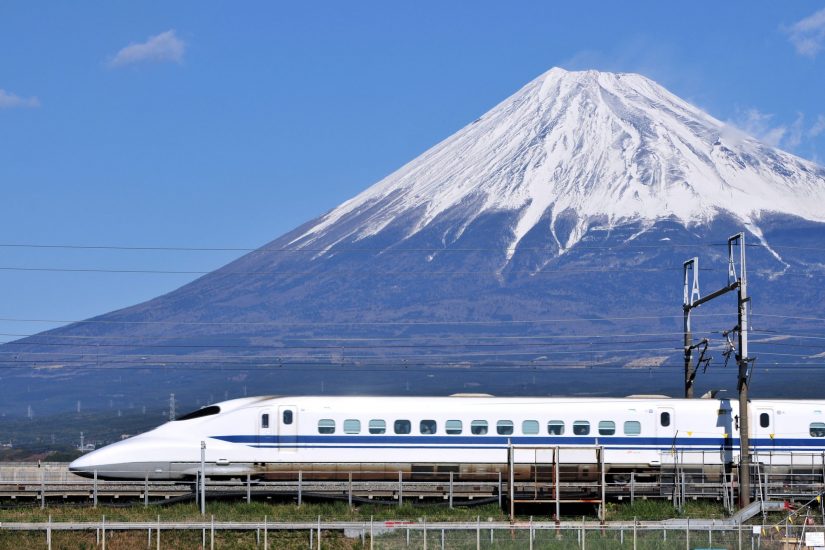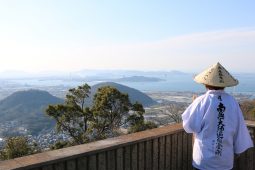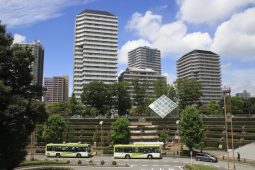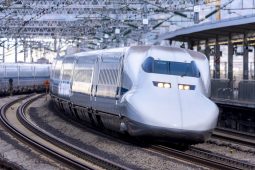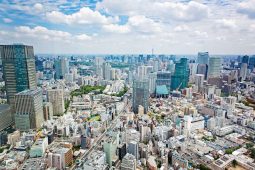To Get Around Japan, Let’s Ride the Shinkansen
Flying is of course a convenient way to travel around the many sightseeing areas that are dotted around Japan. However, if a destination can be easily reached by train, then I recommend taking the train as you can more closely experience everyday life. If you have the chance, I would especially like you to take a ride on the Shinkansen.
The Shinkansen is the high-speed railway that connects Japan’s important urban centers. No doubt there are those that remember its colloquial name “the bullet train” which was born from the shape of the train’s body as it runs along the tracks as if about to take flight. Among the Shinkansen lines, the oldest is the Tokaido Shinkansen, which is a very busy route connecting Tokyo with Kyoto and Osaka. As well as running at speeds close to 300 km/h, on a clear day, Mount Fuji can be closely observed along the route, and many people look forward to having this Shinkansen experience for themselves.
In this article, we will touch on the Shinkansen’s history and current state, before introducing the Chuo Shinkansen that is due to open in 2027 and run at 500 km/h.
The First Generation Shinkansen Ran at 210 km/h
The first Shinkansen line to open was the Tokaido Shinkansen which runs between Tokyo and Osaka. The state-owned enterprise Japanese National Railways (JNR) commenced the Shinkansen’s business operations on October 1 st 1964. This opening date was chosen to be on time for the Tokyo Olympics that opened on October 10 th.
The distance between Tokyo and Osaka is a little over 500 km. Prior to the opening of the Tokaido Shinkansen traveling by rail between these destinations took 6 hours and 30 minutes. The Shinkansen shrank this time to 4 hours.
For people at that time the top speed of 210 km/h was astonishing.
Today’s Top Speed is 320 km/h
Improvements on the Tokaido Shinkansen continued, with ever-increasing speeds and shorter journey times. In 1965, one year after opening, the travel time between Tokyo and Osaka shrank to 3 hours and 10 minutes. In 1986 the top speed was raised to 220 km/h while the travel time between Tokyo and Osaka was cut to under 3 hours at just 2 hours and 52 minutes. At the present time, you can board a train in Tokyo that travels at a top speed of 285 km/h and be in Osaka in just 2 hours and 22 minutes.
However, that is not the fastest Shinkansen speed. The Sanyo Shinkansen that connects Osaka and Fukuoka reaches a top speed of 300 km/h, and the Tohoku Shinkansen has a section where it reaches 320 km/h.
Of course, there are high-speed railways operating in the world that reach higher speeds than that. However, in a mountainous country with little level ground, and on a railway that requires many winding sections, for Japan’s Shinkansen to run at these speeds without any accidents is incredible.
Not only that, but the route of the Joetsu Shinkansen runs through an area famed throughout the world for its heavy snowfall. Even when enough snow falls to suspend services on conventional rail lines, various measures are put in place to ensure the Shinkansen continues normal services. All the Shinkansen keep to their schedules to a degree which will surely surprise you if you use them. Furthermore, although the islands of Honshu and Hokkaido are separated by the Tsugaru Strait, the Hokkaido Shinkansen has connected them with the Seikan Tunnel. Over 50 km long it is the world’s longest undersea tunnel.
Currently, in addition to the five Shinkansen lines of the Tokaido, Sanyo, Tohoku, Joetsu, and Hokkaido routes which were introduced above, there are also the two lines of Hokuriku and Kyushu, and the “mini-shinkansen” lines constructed for Akita and Yamagata, which gives us a total of nine lines. There are also plans for more line extensions, so the Shinkansen is becoming easier and easier to use as a means of traveling about Japan.
The 500 km/h Maglev Railway to Open in 2027
The Shinkansen which has gradually evolved over more than 50 years, will soon undergo a dramatic transformation with the Chuo Shinkansen.
The Chuo Shinkansen has adopted transportation technology that differs completely from current railways that run wheeled vehicles along rails. On the Maglev (short for Magnetic Levitation) linear motor railway, superconducting electromagnets lift and propel the train forward. Currently, construction of this route is in progress with the aim of opening it in 2027.
At its lowest speed of 150 km/h, the train runs on rubber tires. These tires retract as it speeds up and rises 10 cm above the surface. What is more, no driver boards this train. The train’s speed and other operations are controlled via a command room by an autonomous driving system.
When the Maglev is fully operational its top speed will be 500 km/h, and it will be able to cover the distance of just under 300 km between Tokyo’s Shinagawa Station and Nagoya in around 40 minutes. Incidentally, the train that will be used for business operations on the Chuo Shinkansen, holds the world record for the fastest speed in a manned train at 603 km/h.
However, as over 80% of the Chuo Shinkansen’s route consists of tunnels, it is unfortunately not suitable for experiencing high-speed travel while enjoying the landscape. To get a taste of high-speed travel and skimming above ground at 500 km/h, how about applying to experience riding the test track in Yamanashi Prefecture?


